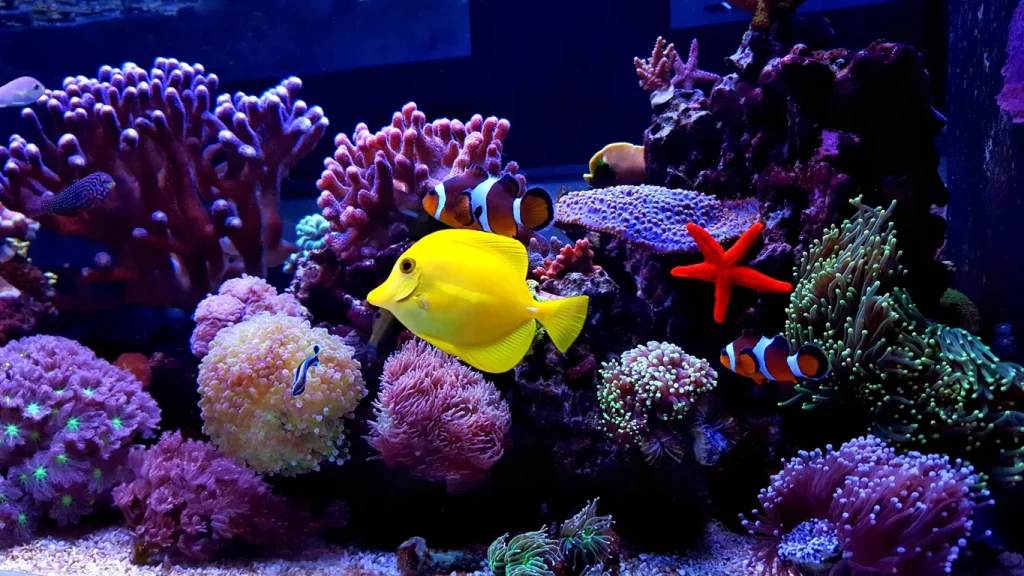How to Maintain Crystal Clear Aquarium Water
Aquarium enthusiasts often strive to maintain pristine water conditions in their tanks. Achieving crystal-clear water not only enhances the aesthetic appeal of the aquarium but also ensures a healthy environment for aquatic life. In this comprehensive guide, we will explore proven methods and tips to help you maintain crystal-clear water in your aquarium.

1. Importance of Maintaining Clear Aquarium Water
Crystal-clear water is a sign of a well-maintained aquarium. It improves visibility, showcases the vibrant colors of your fish and plants, and reduces the risk of disease caused by poor water quality. Understanding the significance of water clarity helps you prioritize regular maintenance.
2. Optimize Filtration Systems
A robust filtration system is the backbone of maintaining water clarity. The following are critical components of an effective filtration setup:
a. Mechanical Filtration
Mechanical filtration removes physical debris such as uneaten food, fish waste, and plant matter. Ensure your filter media, such as sponges or pads, are cleaned regularly to maintain efficiency.
b. Biological Filtration
Biological filtration relies on beneficial bacteria to break down harmful ammonia and nitrites into less toxic nitrates. Invest in high-quality bio-media to promote bacterial colonization.
c. Chemical Filtration
Chemical filtration, such as activated carbon, removes impurities, odors, and discoloration. Replace chemical filter media as recommended by the manufacturer.
3. Regular Water Changes
Performing consistent water changes is essential for maintaining water quality. Replace 20-30% of the tank’s water weekly to dilute toxins, reduce nitrate levels, and eliminate dissolved waste. Always use a dechlorinator to treat tap water before adding it to the tank.
4. Monitor and Control Feeding Practices
Overfeeding is a common cause of cloudy water. Uneaten food decomposes, releasing harmful compounds into the water. To prevent this:
- Feed your fish only what they can consume within 2-3 minutes.
- Remove any excess food immediately.
- Schedule regular feeding times to avoid overfeeding.
5. Use a UV Sterilizer
A UV sterilizer is an effective tool for maintaining water clarity. It eliminates free-floating algae, bacteria, and parasites by exposing them to ultraviolet light. Choose a sterilizer appropriate for your tank size and flow rate.
6. Manage Algae Growth
Excessive algae growth can cloud aquarium water and reduce oxygen levels. Follow these tips to control algae:
- Limit Lighting: Reduce the duration and intensity of lighting to prevent algae blooms.
- Introduce Algae-Eating Fish or Invertebrates: Species such as Siamese algae eaters, Amano shrimp, or nerite snails can help keep algae under control.
- Use Algae Scrapers or Magnetic Cleaners: Regularly clean the aquarium glass and decorations to remove algae buildup.
7. Test Water Parameters Regularly
Monitoring water parameters ensures a stable and healthy environment. Use a reliable water test kit to measure:
- Ammonia
- Nitrite
- Nitrate
- pH
- Hardness (GH) and Alkalinity (KH)
Maintain optimal levels by adjusting water conditions as needed.
8. Avoid Overcrowding
Overcrowding increases waste production and stresses the filtration system. Follow these guidelines to avoid overstocking:
- Research the specific space and care requirements of your fish species.
- Use the “one inch of fish per gallon” rule as a rough guide for stocking levels.
- Consider tank upgrades if your aquarium becomes overcrowded.
9. Maintain Substrate Cleanliness
The substrate can harbor detritus and waste, leading to water cloudiness. Use a gravel vacuum during water changes to remove debris from the substrate without disturbing beneficial bacteria.
10. Incorporate Live Plants
Live plants improve water clarity by absorbing excess nutrients and producing oxygen. Fast-growing species like hornwort, Amazon swords, and anubias can help maintain water quality and reduce algae growth.
11. Address Cloudy Water Issues Promptly
Cloudy water can result from several factors, including bacterial blooms, substrate disturbance, or overfeeding. To resolve cloudy water:
- Perform partial water changes to remove excess waste.
- Clean the filter media to improve filtration efficiency.
- Avoid adding unnecessary chemicals that could further cloud the water.
12. Choose the Right Aquarium Size
Smaller tanks are more challenging to maintain due to limited water volume, which amplifies fluctuations in water parameters. A larger tank offers greater stability and reduces the likelihood of water clarity issues.
13. Use Water Conditioners
Water conditioners can neutralize harmful chemicals, bind heavy metals, and promote a healthy aquatic environment. Look for conditioners that target specific issues, such as ammonia or chlorine removal.
14. Conduct Regular Equipment Maintenance
Proper equipment maintenance ensures efficient filtration and circulation. Clean filter components, check for clogs, and replace worn-out parts to keep your system running smoothly.
15. Avoid Overuse of Additives
While additives like water clarifiers can provide temporary solutions, overusing them may harm aquatic life. Rely on natural methods and sound maintenance practices for long-term clarity.
Conclusion
Maintaining crystal-clear aquarium water requires dedication, regular upkeep, and the right equipment. By following these detailed strategies, you can create a visually stunning and healthy environment for your aquatic companions. Remember, the key to success lies in consistency and attentiveness.